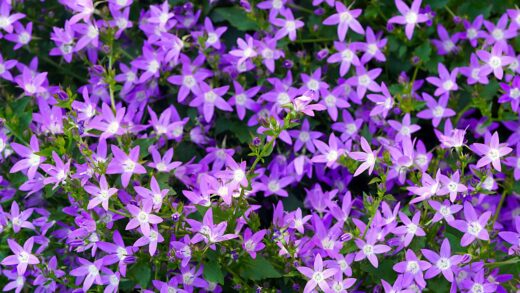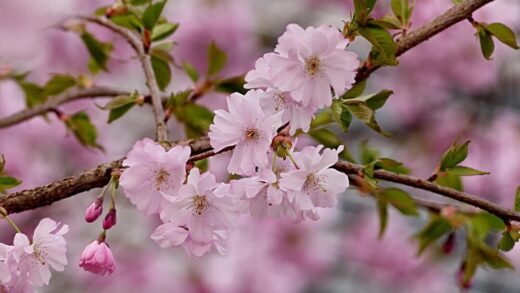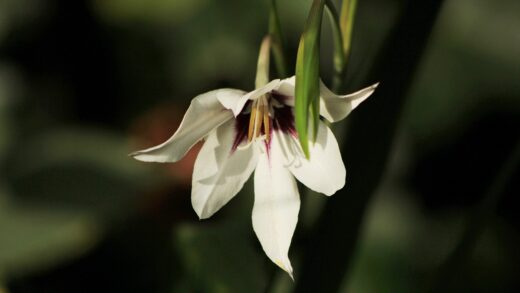The dog rose is a testament to nature’s resilience, possessing a remarkable tolerance for dry conditions once it is fully established. This inherent drought resistance stems from its deep and extensive root system, which is adept at seeking out moisture from lower soil profiles. However, this hardiness should not be mistaken for an indifference to water, especially during the crucial establishment phase. For the first year or two after planting, a consistent and thoughtful watering regimen is essential to encourage the development of that very root system that will sustain it in the future. Understanding the balance between providing sufficient moisture for healthy growth and respecting the plant’s natural ability to withstand periods of dryness is key to its successful cultivation. Overwatering can be just as detrimental as underwatering, creating conditions that are unfavorable for this rugged species.
The water needs of a dog rose are dynamic, changing significantly with the age of the plant, the time of year, and the prevailing climatic conditions. A young, newly planted shrub has a limited root system and is therefore highly dependent on the moisture available in the top layer of soil. During its first growing season, it is vital to keep the soil around the plant consistently moist but never waterlogged. This typically translates to a deep watering once or twice a week, depending on rainfall and temperature. The goal is to provide enough water to soak the entire root zone, encouraging the roots to grow downwards in search of stable moisture reserves.
As the plant matures and its root system expands, its reliance on supplemental irrigation decreases dramatically. An established dog rose, which has been in the ground for two or more years, can often thrive with only the moisture provided by natural rainfall in many temperate climates. However, during prolonged periods of drought or in particularly hot and dry regions, even mature plants will benefit from an occasional deep soaking. This helps to prevent stress, which can manifest as poor flowering, reduced hip production, and increased susceptibility to pests and diseases.
The best time of day to water is in the early morning. This timing allows the water to be absorbed efficiently by the roots before the heat of the day leads to significant evaporation. Watering in the morning also ensures that the foliage has ample time to dry, which is a critical practice for preventing the development of fungal diseases like black spot and powdery mildew that flourish on damp leaves. It is always preferable to apply water directly to the soil at the base of the plant rather than using overhead sprinklers which wet the entire shrub.
Understanding the dog rose’s natural water tolerance
The exceptional drought tolerance of an established dog rose is a direct result of its evolutionary history. Native to a wide range of habitats across Europe, Northwest Africa, and Western Asia, this species has adapted to survive in environments with varying and often unpredictable rainfall patterns. Its ability to thrive in such conditions is largely attributed to its vigorous and deep-reaching root system. This extensive network of roots acts as a highly efficient mechanism for accessing water reserves stored deep within the soil, far below the surface layers that dry out quickly.
More articles on this topic
This deep-rooting habit means that once a dog rose is mature, it is far less susceptible to the effects of short-term dry spells that might cause stress to more shallow-rooted plants. While other garden plants may show signs of wilting after just a few hot, dry days, a healthy dog rose will often remain turgid and green. This resilience makes it an excellent candidate for low-maintenance gardening, xeriscaping, and for planting in areas of the garden that may be difficult to irrigate regularly. It is a plant that truly embodies the principle of self-sufficiency in the garden landscape.
However, it is important to recognize that this tolerance is not present from the moment of planting. It is a characteristic that develops over time as the plant grows and matures. During the first one to two years, the young shrub is focused on establishing this vital root infrastructure. In this critical phase, it is entirely dependent on the moisture available near the soil surface. Providing consistent and deep watering during this period is an investment in the plant’s future resilience, effectively training the roots to grow downwards and outwards.
Furthermore, the physical characteristics of the plant itself contribute to its water efficiency. The leaves of the dog rose are relatively small and the plant can, under severe stress, drop some of its foliage to reduce water loss through transpiration. The thorny stems also offer some protection from grazing animals, allowing the plant to conserve its resources. Understanding these natural adaptations helps the gardener to appreciate why the dog rose is so robust and to provide care that complements, rather than contradicts, its innate survival strategies.
Watering newly planted shrubs
The care provided to a dog rose in its first year after planting is the most critical period for its long-term health, and proper watering is the cornerstone of this care. A newly planted shrub, whether from a container or bare-root, has a severely restricted root system and is highly vulnerable to drying out. The primary objective during this establishment phase is to keep the root ball and the surrounding soil consistently moist to encourage the rapid growth of new roots into the native soil. This initial period requires more frequent and attentive watering than at any other point in the plant’s life.
More articles on this topic
Immediately after planting, the shrub should be given a thorough and deep soaking. This initial watering is not just about providing moisture; it is also crucial for settling the soil around the roots and eliminating any air pockets that could hinder root development. For the first few weeks, it is advisable to check the soil moisture every few days, especially in warm or windy weather. The soil should feel damp to the touch several inches below the surface. If it feels dry, it is time to water again.
A general guideline for the first growing season is to provide the equivalent of about one inch of rainfall per week, either from precipitation or supplemental irrigation. It is far more beneficial to provide this water in one or two deep soakings rather than a little bit every day. Deep watering encourages the roots to grow downwards, searching for deeper moisture, which is the foundation of drought tolerance. Shallow, frequent watering, on the other hand, encourages a shallow root system that will be more susceptible to drying out during hot spells.
As the season progresses from spring into summer and then autumn, you can gradually reduce the frequency of watering as the plant’s root system begins to establish itself. By the end of the first full year, the plant should have developed a sufficiently robust root system to require significantly less supplemental water. The transition should be gradual, allowing the plant to slowly acclimate to relying more on its own resources and natural rainfall.
Irrigation for established plants
Once a dog rose has been in the ground for two or more years and is showing signs of vigorous growth, it can be considered established. At this point, its water requirements change dramatically. The extensive root system it has developed allows it to access moisture from a large volume of soil, making it remarkably self-sufficient in many climates. For gardeners in regions with consistent rainfall, an established dog rose may require no supplemental irrigation at all, except in the most extreme and prolonged periods of drought.
The key to watering a mature dog rose is to water deeply but infrequently. When you do water, the goal is to replenish the moisture in the deeper soil layers where the majority of the roots are located. This means applying water slowly over a prolonged period, allowing it to soak in rather than run off. A soaker hose or a drip irrigation system placed around the base of the plant is an excellent method for achieving this, as it delivers water directly to the root zone with minimal loss to evaporation. A single, deep watering every few weeks during a dry spell is far more effective than regular light sprinklings.
The need for watering will be dictated by the weather. During a cool, wet summer, additional watering is likely unnecessary. However, during a hot, dry summer, particularly on sandy or free-draining soils, the plant will appreciate an occasional deep drink to keep it in peak condition. It is always best to check the soil condition before watering. Dig down a few inches with a trowel a short distance from the plant’s base. If the soil is dry at this depth, it is a good indication that the plant could benefit from irrigation.
Applying a thick layer of organic mulch around the base of the established shrub can significantly reduce the need for watering. A 3-4 inch layer of wood chips, bark, or compost helps to conserve soil moisture by reducing evaporation from the soil surface. Mulch also helps to suppress weed competition and moderates soil temperature, creating a healthier environment for the plant’s roots. This simple, sustainable practice works in harmony with the dog rose’s natural resilience, creating a truly low-maintenance and thriving plant.
Recognizing signs of over and under-watering
Learning to recognize the visual cues of water stress is an essential skill for any gardener. Both too much and too little water can cause problems for a dog rose, and sometimes the symptoms can appear surprisingly similar. An under-watered plant will often exhibit wilting leaves, particularly during the hottest part of the day. The leaves may also appear dull, lose their healthy green color, and eventually turn yellow or brown and drop from the plant. In severe cases, the tips of the branches may start to die back.
Conversely, an over-watered dog rose can also display yellowing leaves and leaf drop. This is because waterlogged soil deprives the roots of oxygen, causing them to suffocate and die. Without a healthy root system, the plant cannot absorb water and nutrients, leading to symptoms that mimic those of drought. One key difference is that the soil around an over-watered plant will be consistently wet or even boggy, and the yellowing leaves may feel soft and limp rather than dry and crisp. Root rot, characterized by dark, mushy roots, is the ultimate consequence of excessive watering.
It is important to always assess the soil moisture before taking corrective action. The “finger test” is a simple and reliable method: insert your finger into the soil up to the second knuckle near the base of the plant. If the soil feels dry at that depth, the plant likely needs water. If it feels moist, hold off on watering and check again in a few days. If the soil is soggy, it is a clear sign of over-watering, and steps should be taken to improve drainage or reduce irrigation frequency.
Ultimately, careful observation is the best tool for determining a dog rose’s water needs. Pay attention to how the plant responds to rainfall and irrigation. A healthy, well-hydrated dog rose will have vibrant green foliage and exhibit steady, new growth during the growing season. By learning to read these signs and combining them with an assessment of the soil and weather conditions, you can provide the optimal amount of water to keep your dog rose thriving without the risks of either drought stress or waterlogging.















